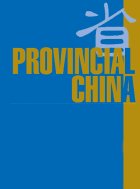| The Malaysian Insider |
| March 19, 2012 |
| Beijing |
 |
|
| A worker at the Jinyuan Company’s smelting workshop pours the rare earth metal Lanthanum into a mould near the town of Damao, in China’s Inner Mongolia Autonomous Region. — Reuters file pic |
BEIJING, March 19 — Tackling pollution, not freeing up trade, is regarded as the solution to a global shortage of rare earths, the metals that are the building blocks of the 21st century.
The United States, Europe and Japan have lodged a formal trade complaint against China, the world’s monopoly supplier of rare earths, accusing it of choking exports of the metals, used in advanced technologies from computer screens to hybrid cars.
Industry experts say the West and Japan have a strong case to argue before the World Trade Organisation (WTO), but the same experts and environmental groups argue that mere victory on a trade complaint will not be enough to break China’s grip.
Instead, they say the key to ending China’s monopoly is for other nations to help clean up one of mining’s dirtiest industries — an industry the United States, once the world’s largest supplier, allowed to wither many years ago.
China’s rare earths refineries, which secured their monopoly by turning out metals at extremely low prices for more than a decade, have poisoned rivers with acid and piled up radioactive waste — an environmental cost that aroused little controversy in developed, consuming nations when metal prices were low.
 |
|
| A bastnaesite mineral containing rare earth. — Reuters pic |
Now that China has squeezed exports and driven up international prices over the past three years — a move it says is needed to clean up its industry and conserve a dwindling resource — the West and Japan have finally cried foul.
“The rest of the world basically gave up on rare earths 10 years ago,” said Ian Chalmers, managing director of budding Australian rare earths miner Alkane Resources, one of a band of firms trying to redevelop the industry outside China.
He said the turning point came when US rare earths miner Molycorp mothballed its Mountain Pass mine in California in 2002, having four years earlier shut down its separation plant due to problems disposing of waste water. The mine had once accounted for 40 per cent of global supplies of rare earths.
“The rest of the world was seemingly asleep as China grew to become a goliath in the rare earth industry,” according to a 2010 paper prepared for a US energy security thinktank, the Institute for the Analysis of Global Security.
The rest of the world, though, is now waking up, thanks to soaring world prices, with some of the more prized rare earths trading at more than six times their 2009 prices and more than double domestic Chinese prices, data published by another budding Australian miner, Lynas Corp, shows.
 |
|
| Labourers work at a site of a rare earth metals mine at Nancheng county, Jiangxi province. — Reuters pic |
In 2007, Molycorp restarted Mountain Pass, where it has kicked off a modernisation and expansion plan, while budding Australian miners Alkane Resources and Lynas have found investors are once again eager to fund new mines and refineries — provided environmental issues are resolved.
“Environmental standards and technology have improved greatly. The industry is capable of operating in a much more environmentally responsible manner now,” said Chalmers of Alkane Resources, which has run a pilot processing plant in Australia since 2008 as it prepares to mine its own lode of rare earths by the middle of the decade.
That environmental assurance by the industry, however, have stirred scepticism, despite advances in processing technology and pollution controls since the West ceded control to China.
“There is solid evidence from China, the United States and even Malaysia, that the processing of rare earths contaminates the environment and endangers health,” said Ronald McCoy, president of Malaysian Physicians for Social Responsibility.
His group has been campaigning to stop Lynas Corp opening a rare earths plant under construction in east Malaysia. Lynas says the plant, which will process ore mined in Australia, will use state-of-the-art technology and meet strict environmental rules, but this has not satisfied protesters.
Malaysian protesters blame an earlier rare earths plant, shut by Japan’s Mitsubishi Chemicals in 1992, for birth defects and a high number of leukaemia cases.
The price of control
 |
|
| Analysts say the key to ending China’s monopoly is for other nations to help clean up one of mining’s dirtiest industries. — Reuters pic |
China’s message has been consistent: it deserves to profit more from its dominant role in the supply of the 17 vital elements used in a wide range of advanced electronics, and should no longer be expected to pay the full environmental costs of providing more than 90 per cent of global supplies.
Environmental campaigners point to studies done in both New Jersey and China showing that thorium radiation emitted during the refining process and by plant waste can cause cancer, leukaemia, birth defects and chronic lung diseases.
The government says the whole sector has been producing more than 20 million tonnes of poisonous waste water a year, and in the major Chinese production regions of Inner Mongolia in the northeast and Jiangxi in the east, mining has created bubbling streams of toxic tailings that contaminate water supplies and render farmland worthless for decades.
Beijing has shut hundreds of small private operators accused of neglecting health and safety standards in the quest for quick profits — but pollution from giant state-owned producers such as Baotou Rare Earth is just as severe.
“We believe there are legitimate environmental concerns in the issue of rare earth mining and many actions taken on the Chinese side, like shutting down rogue mines, are based on such concerns,” said Ma Tianjie, a Beijing-based campaigner with Greenpeace.
“Big consumers of rare earths such as the United States, the EU and Japan should see this as a shared responsibility and should refrain from just pointing fingers at China.”
Even-handedness
China’s commerce ministry spokesman, Shen Danyang, stressed that China seeks to protect its resources and environment rather than restrict free trade or promote domestic industry.
 |
|
| The US, once the world’s largest supplier, allowed the industry to wither domestically years ago. — Reuters pic |
But foreign buyers claim China has been trying to do both. Quite apart from restricting supply, it has created a de facto “two-tier pricing system” that allows rare earths to be sold to domestic firms at a discount.
“Using an environmental defence requires even-handedness in the way China has imposed environmental restraints — it can’t just be to protect their own,” said Chin Leng Lim, WTO expert and professor of law at the University of Hong Kong.
For China, there is no contradiction. Pollution from rare earths mining is just one manifestation of a wider problem that relates to its global market role. Instead of stripping the earth bare to supply raw materials to the world, Beijing wants to move up the value chain and dominate downstream sectors.
By letting domestic manufacturers buy rare earths at a significant discount, it is seeking to attract foreign firms to relocate to China and help China move up the value chain.
“There have been plenty of instances where companies reliant on Chinese rare earths have had to send their manufacturing business into China, which, from a Chinese economic perspective, is a strong result,” said David Nolan, chairman of Hastings Rare Metals, an Australian mining firm that is developing its own rare earth deposit.
“Beijing uses export controls and its monopolistic position as producer ... as the basis of a strategy to build world-class companies that create jobs,” said David Abraham, an independent resource analyst based in Jakarta.
 |
|
| China’s initial move to flood the market with cheap supplies was tolerated initially. — Reuters pic |
“In a sense Beijing is modelling domestic firms after companies like Hitachi, once a mining company but now a massive electronics and infrastructure conglomerate,” he said.
Not rare
The term rare earths is something of a misnomer. The elements themselves are not especially rare, but the ores are hard to refine. China came to dominate the field partly because it developed the separation capacity required to process the ores and the stomach required to put up with the pollution.
It also had the cheap human resources required to scour remote regions like Inner Mongolia for deposits, giving it a significant price advantage, allowing it to flood the market and drive out competitors.
“There has been a clear, very aggressive policy from China,” said a European Union official speaking on condition of anonymity. “It has more than 90 per cent of world production and there is a reason for that: it results from very aggressive pricing over the last 20 years.”
A commentary by state news agency Xinhua this week accused Western countries of trying to have it both ways: China, normally criticised for undercutting its foreign competitors, was now subject to WTO action for charging too much.
 |
|
| Environmental campaigners say thorium radiation emitted during the refining process and by plant waste can cause cancer, leukaemia, birth defects and chronic lung diseases. — Reuters pic |
But China’s initial move to flood the market with cheap supplies was tolerated because rare earths were used only in small quantities and in relatively low-end technologies such as glass polishing and oil refining.
“Previously the world worked quite well with the manner in which China was allowing rare earths to be exported and satisfying the demand from other countries,” said Nolan of Hastings Rare Metals.
Chinese officials insist the country’s dominance is no longer anything to celebrate. Despite having only a third of global reserves, it has damaged its environment in order to supply the bulk of the world’s rare earth needs.
They have said they are happy for other countries to “share the burden” of production, and Beijing’s supply restrictions have already encouraged other sources to emerge.
Projects launched by the likes of Hastings Rare Metals, Molycorp, Lynas and Arafura Resources could cut China’s overall share of the output of certain critical rare earth oxides from 98 per cent in 2010 to as low as 41 to 46 per cent in the next five years, according to a 2011 paper by Technology Metals Research.
Beijing’s strategy is no longer based on maintaining market share, but on improving value. With global supplies expected to remain tight over the next decade, China will see no reason to radically adjust its strategy for the sector, regardless of any future WTO ruling.
“The world still faces a critical shortfall of certain rare earth elements. That’s not a China problem, that’s a global one,” said Abraham. — Reuters







